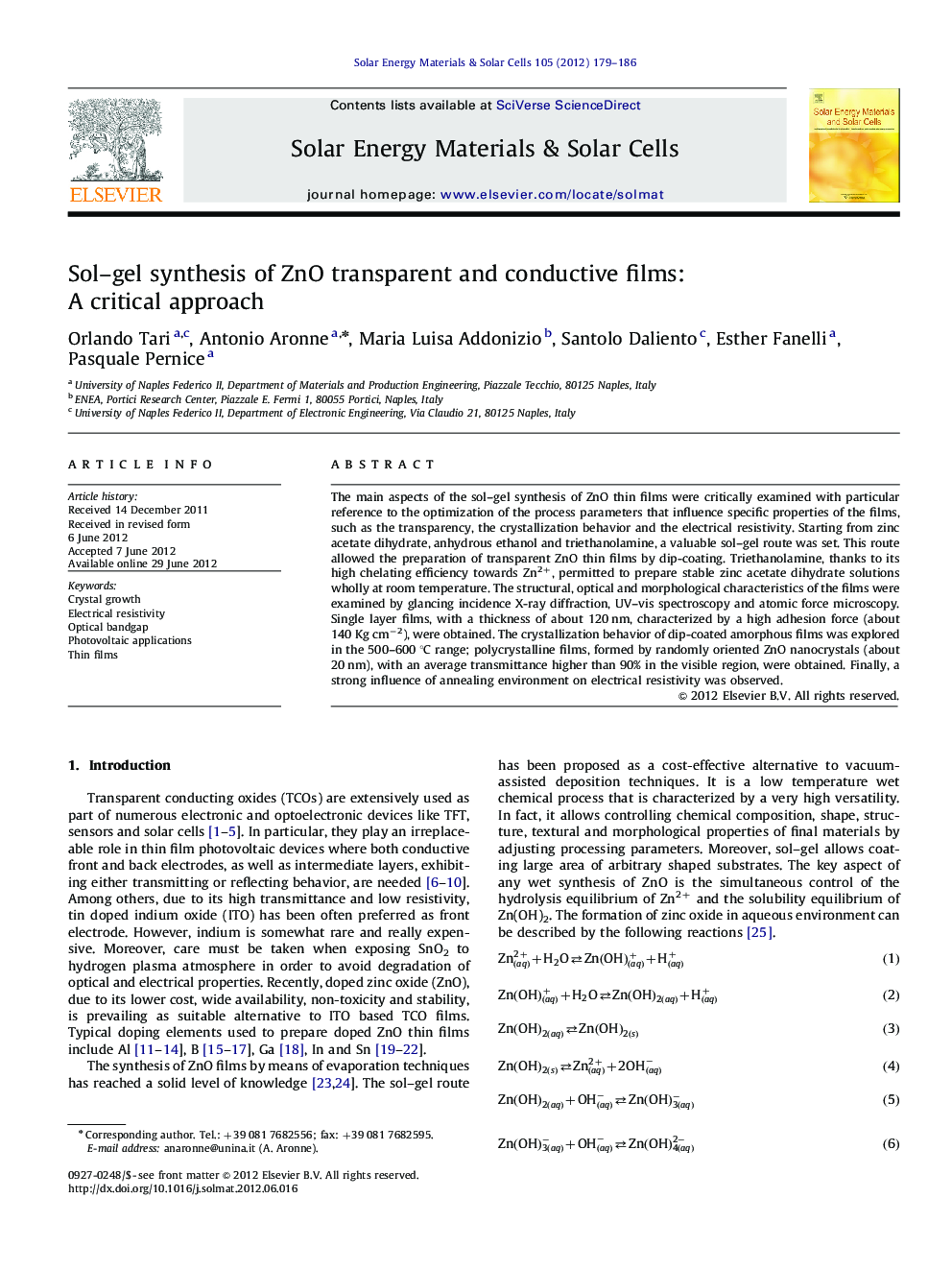| Article ID | Journal | Published Year | Pages | File Type |
|---|---|---|---|---|
| 78966 | Solar Energy Materials and Solar Cells | 2012 | 8 Pages |
The main aspects of the sol–gel synthesis of ZnO thin films were critically examined with particular reference to the optimization of the process parameters that influence specific properties of the films, such as the transparency, the crystallization behavior and the electrical resistivity. Starting from zinc acetate dihydrate, anhydrous ethanol and triethanolamine, a valuable sol–gel route was set. This route allowed the preparation of transparent ZnO thin films by dip-coating. Triethanolamine, thanks to its high chelating efficiency towards Zn2+, permitted to prepare stable zinc acetate dihydrate solutions wholly at room temperature. The structural, optical and morphological characteristics of the films were examined by glancing incidence X-ray diffraction, UV–vis spectroscopy and atomic force microscopy. Single layer films, with a thickness of about 120 nm, characterized by a high adhesion force (about 140 Kg cm−2), were obtained. The crystallization behavior of dip-coated amorphous films was explored in the 500–600 °C range; polycrystalline films, formed by randomly oriented ZnO nanocrystals (about 20 nm), with an average transmittance higher than 90% in the visible region, were obtained. Finally, a strong influence of annealing environment on electrical resistivity was observed.
► Sol–gel synthesis of ZnO films wholly performed at room temperature by using TEA. ► Highly transparent ZnO thin films deposited on glass substrates by dip-coating. ► Investigation of annealing conditions on crystal growth and electrical resistivity. ► Optimization of substrate wettability and film adhesion force to the glass. ► Interesting trend in terms of surface roughness (RMS) in view of PV applications.
